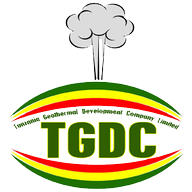History
The word geothermal comes from two words which are Geo means Earth and Thermal which means Heat. The origin of this heat includes reactions taking place in the earth’s interior and magmatic activities like volcanic eruptions. This heat energy is tapped by drilling which allow for access of geothermal heated fluids mainly as steam.
Geothermal energy described to be green energy due to the fact that operation of geothermal power plants does not involve burning of fossil fuels hence very little CO2 emissions are produced.
Geothermal energy is one of the most favored source of energy especially with recent of global warming concern where energy sector has been contributing much to greenhouse gases production. The exploitation of geothermal energy can reduce the production of greenhouse gases hence reducing the effect of global warming.
Applications and Advantages of Geothermal Energy
Geothermal has a vast of applications including but not limited to electricity generation, horticulture, agriculture, wood drying, fish farming, pasteurization, laundry, green house farming, paper processing, recreational purpose and therapeutically good through balneology.
Advantages of geothermal energy includes but not limited to; it is renewable, clean energy source, cheap, reliable, high conversion efficiency and not affected by weather & climatic variations.
Geothermal energy is used in 82 countries of the world; amongst them, in 24 countries is used for electricity generation and in 82 countries is used in other direct use application.
Surface manifestations of geothermal energy
Geothermal surface manifestation refers to any feature or indication on Earth’s surface that may signify existence of ageothermal system in subsurface. Examples of surface manifestations are hot springs, fumaroles, geysers, altered ground,mud pools, silica sinter andother hydrothermal deposits, Fimbristylisexilis, volcanic eruptions and young larvaand presence of caldera.
A geothermal system has four main features which are; heat source, reservoir, cap rock and recharge area.Geothermal heat from the source heats water in the reservoir, the heated water and steam(depending on the strength of the heat sources) moves through geological structures to be manifested on the earth’s surface.
Geothermal history in Tanzania dates back in early days of Chiefdom era, specifically at Mtagata area in Kyerwa district , Kagera region where it is said the people paid the Chief of Karagwe a fee for bathing; this fee was then reduced for some years after the German occupation, and was finally abolished altogether by the German authorities (Grant C.H.B). It is still said that these Hot Springs have healing properties for all kinds of scares, wounds, venereal disease and the natives still use these pool.
Primarily, geothermal history is mainly on direct use of the resource, current TGDC is working on using the resource for electricity generation and promote medium and large scale agricultural and industrial direct use of the resource.

